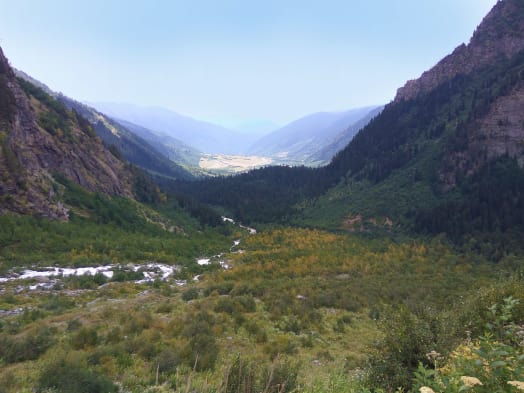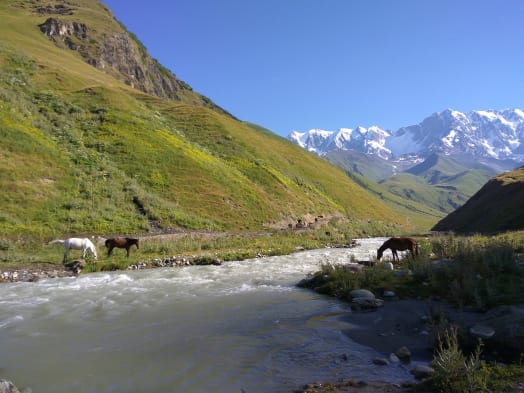Here we will write about the roads in Upper Svanetia and Mestia's Ethnographic Museum - a must see!
The road from Ushguli to Mestia is still unpaved but much better than from Lentekhi to Ushguli, not just 4x4 can be spotted on the road. There was more traffic and passing cars left clouds of dust behind them. Mestia felt like a big town after Ushguli, but I suppose if you are coming from Tbilisi you get the opposite impression. Maybe it is better to go to Ushguli from the west, that means from Mestia – it is just like going up a jungle river – the way gets narrower, harder, the surroundings wilder...
Anyway, the thing I really wanted to see in Mestia was its Ethnographic Museum I had heard a lot about. It is there that the ancient Bibles and Icons of Svanetia are exhibited for public display– unfortunately, all the churches we tried to visit were closed so the museum was the only chance left… What concerns the museum artefacts – surely, they were priceless: Just think of it – in the 9th or 12th century a mountain community cut off from the rest of the world produces masterpieces: icons, books out of the skins of 300 oxen. Apart from 'religious' expositions, the museum also had rooms dedicated to utensils, cloth and jewellery. It was visible that they had recently invested some effort into the museum: subtitles were in Georgian and English (not Russian!), the staff was young and friendly (no babushkas knitting their socks in the corner like it used to be in the Soviet museums) and the museum offered a platform for temporary art exhibitions.


But still, I had the impression they missed the mark. The message I got from the artefacts under the spotlights was that the ancestors of the Svans were the greatest artists, craftsmen and most earnest believers in their ancient Gods. But this is exactly the kind of message an 'old' ethnographic museum would have and I mean not just in post-Soviet countries. Hardly any new topics or inconvenient questions, no other perspective. I am new to Svanetia and I don't know what this other perspective might be, but I definitely know what kind of narrative I don't want to encounter in museums – about the greatness of the ancestors.
After some time we drove north to find a place less inhabited than Mestia. For the ones who want to follow in our footsteps, I should mention that we saw no places suitable for a campsite on our way from Ushguli to Mestia. We were not able to find one by Mestia either. The road north of Mestia was under construction and the passing trucks left even greater clouds of dust on the poor hikers en route to the Glacier at Mestia. A slightly forested meadow by the stream was an option but frankly speaking not a brilliant one.
We drove further west and turned from the main road to the village of Mazeri where we found what we were looking for. A perfect place for a campsite was behind the village, by the roaring river, hidden from the main road by a bunch of trees. In the evening, a few horses popped into our campground again and kept us a company.

it is you who keeps our site running and helps us grow and bring you more stories from our trips and the local people we encounter. We believe that telling these stories brings the world closer together and is hence a way to make a positive change! Please support us with a small donation on the kofi platform. Even a small contribution makes a big difference!


